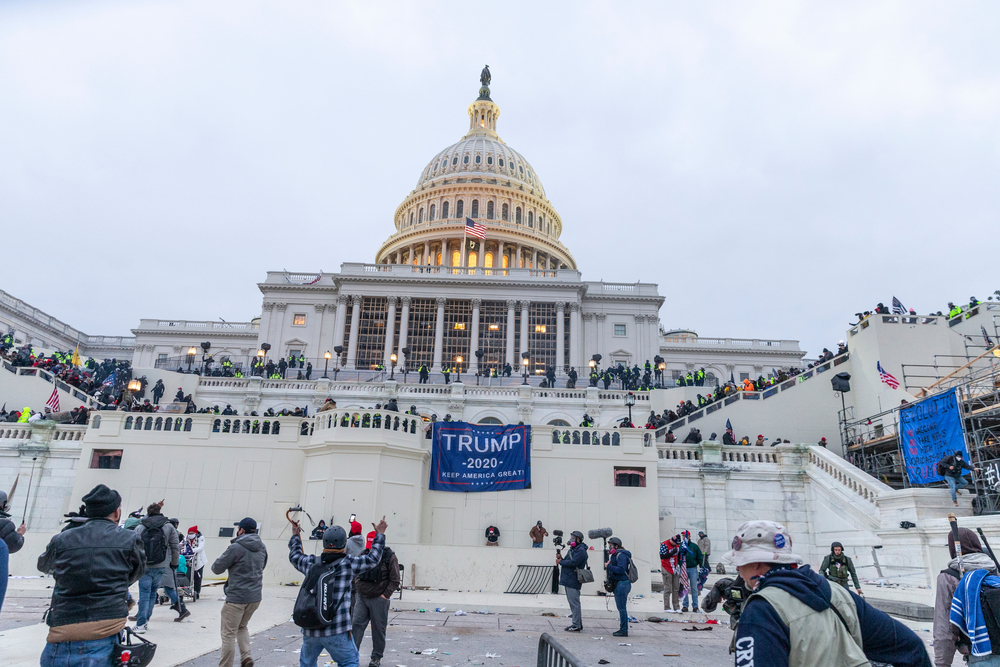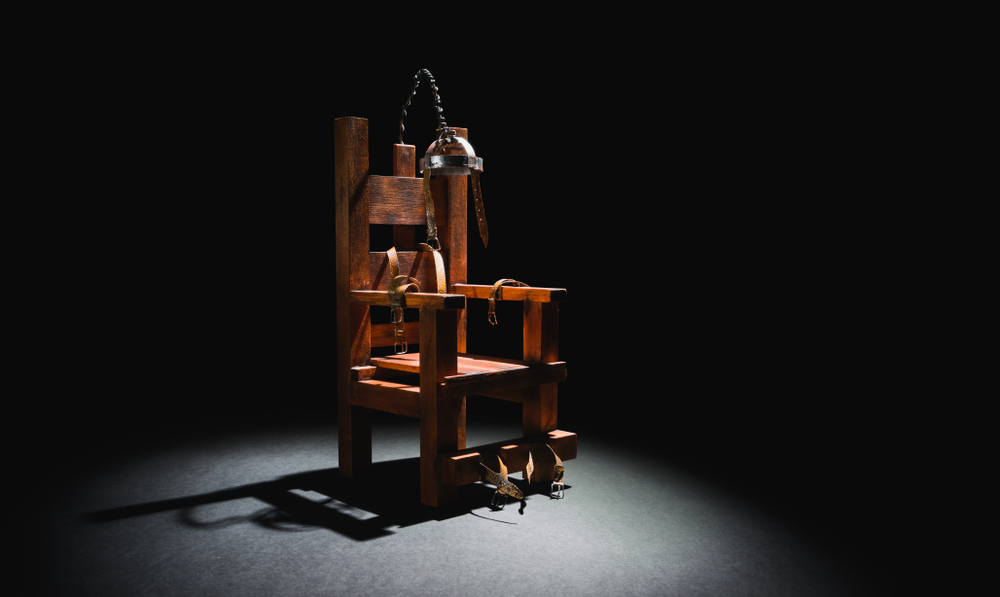Study: Jailing people on bail does not make communities safer
A study recently released by the Prison Policy Initiative shows very few people released before trial go out and commit another crime while awaiting their court date.
“You see more and more counties experiment with bold pretrial reforms, including bail reforms,” said Wanda Bertram, communications strategist for the activist group. “A lot of the time when counties try this, there will be a backlash before it rolls out or after it begins from pundits claiming it will make the county or city less safe and there will be a spike in crime. It is questionable, constitutionally, to hold people in jail before convicted.”

The study shows little correlation between pretrial release and a spike in crime.
RELATED: Study: As jail releases increased during pandemic, Black inmates were left behind
RELATED: Is coronavirus the new death penalty in America’s prisons?
“What we wanted to show is that among the counties that have instituted pretrial reform and done followup studies, what they found was people released didn’t go on to commit crimes while they were out. That shows there is not a public safety purpose” to pretrial detention, Bertram said.

Taryn Merkl, senior counsel in the Justice Program at the Brennan Center for Justice, said many studies over the years show those theories are overblown. “With the reforms implemented in New Jersey or New York, there is no concrete data the reforms are responsible for changes in the crime rates.”
On Jan. 1, 2017, New Jersey shifted from a system that relied principally on setting money bail as a condition of release to a risk-based system considered more objective, so fairer to defendants unrelated to their ability to pay bail. The statute sets deadlines for the timely filing of indictments and the disposition of criminal charges for defendants, according to the New Jersey courts.
The Press of Atlantic City reported that “nearly three years ago, New Jersey replaced its system of releasing defendants based on posting cash bail with one that evaluates whether a defendant would pose a safety risk to the public if released. At that time, some expressed fears that as a result, crime would increase, many defendants would skip their court dates and the court system would be thrown into chaos. None of that has happened.”
According to the FBI, the article states, violent crimes in New Jersey decreased from 21,914 in 2016 to 18,357 in 2019.
“I do think there is starting to be a consensus, including among law enforcement, that money bail does not necessarily keep communities safe and may result in unnecessary pretrial detention,” Merkl said. ‘’People lose jobs, their kids get taken away and it causes a downward spiral. It opens that revolving door. Even people detained two or three days can have huge impacts that can lead to a higher risk of committing a future crime.”
Merkl’s work focuses on building a smarter, stronger and a fairer criminal justice system and reducing unnecessary incarceration.
“The reason this is a useful piece is that you see more and more counties experiment with bold pretrial reform,” Bertram said of the Prison Policy Initiative study. “All pretrial reform reduces the number of people held before trial happens.”
“We found four states, as well as nine cities and counties, where there is existing data on public safety from before and after the adoption of pretrial reforms,” the study states. “All but one of these jurisdictions saw decreases or negligible increases in crime after implementing reforms. The one exception is New York State, where the reform law existed for just a few months before it was largely rolled back.”
Some 75% of people held in jails are awaiting trial, so presumed legally innocent, the study states. That is often because they are too poor to make bail. “As we’ve previously reported, increased arrests and a growing reliance on money bail over the last three decades have contributed to a significant rise in pretrial detention. And just three days of pretrial detention can have detrimental effects on an individual’s employment, housing, financial stability, and family wellbeing.”
Bail bond companies have a huge lobby that fights against such reforms, Merkl said.
“The elimination of cash bail nationwide is certainly the number one goal,” she said, but a tough one to reach because of the lobbying. “Nobody should be held in jail simply because of their inability to pay. There was a fight in California that led to a recent statute placed on the ballot. In 2018 the legislature passed a statute to eliminate cash bail. With the bail bond industry leading the charge, that statute got placed on the November ballot and it failed.”
The bail bond industry certainly will continue to fight efforts to eliminate cash bail, Merkl said, but there are also legal and structural barriers to its elimination.
“In New Jersey, before it implemented cash bail reforms it had to amend the state constitution” because it included wording that people had a right to bail.
“Cash bail is deeply ingrained in our Anglo Saxon psyche and came to the U.S. with the British,” she said. “The Constitution says excessive bail cannot be imposed. Other state statutes have an affirmative right to cash bail. They would need to engage in a constitutional amendment process to eliminate cash bail.”
In many places, Bertram said, the bail system is the primary way of keeping people incarcerated.
“The party that benefits is the bail bond industry,’’ she said. “There are even counties where bail bond agents are making millions and they are not even paying up when people fail to appear. They are operating with a blank check.”
One reason the unconvicted population in the U.S. is so large is because of the money bail system, she said, in which the constitutional principle of innocent until proven guilty only really applies to the well off.
“With money bail, a defendant is required to pay a certain amount of money as a pledged guarantee that they will attend future court hearings,’’ she said. “If the defendant is unable to come up with the money either personally or through a commercial bail bondsman, they can be incarcerated from their arrest until their case is resolved or dismissed in court.”
“States and counties can and should build on these pretrial reforms,” the study states. “More progress can be made to continue reducing the number of people held pretrial and address concerns such as racial bias inherent in pretrial risk assessment tools. But the data is clear: When it comes to public safety, these reforms are a step in the right direction.”
Newer state-level reforms submitted with study
New Jersey
In 2017, the New Jersey legislature implemented a risk-informed approach to pretrial release and eliminated cash bail use. The pretrial population decreased by 50% from 2015 to 2018. By 2019, the overall jail population declined 45%. Violent crimes decreased by 16% from 2016 to 2018. There was a negligible difference in the number of people arrested while on pretrial release.
New Mexico
In 2016 voters approved a constitutional amendment that prohibits judges from imposing bail amounts people cannot afford. It also enables the release of many low-risk defendants without bond and allows defendants to request relief from the requirement to post bond. The impact of this reform on the jail population isn’t known. The statewide crime rates have declined since the reforms took effect in mid-2017. Furthermore, the number of people released pretrial who are not charged with committing a new crime increased from 74% to 83.2%.
Kentucky
Kentucky started using a validated pretrial risk assessment tool in 2013. By 2017, the state began allowing the release of low-risk defendants without seeing a judge. A statewide pretrial services agency is required to make a release recommendation within 24 hours of arrest. It also reminds people of upcoming court dates through texts and calls.
New York
A law that went into effect on Jan. 1 eliminated money bail and pretrial detention for most misdemeanors and many nonviolent felony cases. It prohibits judges from considering public safety in their release decisions. But on April 3, the bail reform was amended, scaling back some of the changes. The new law, which took effect on July 1, expanded the list of charges for which bail can be set and gave judges more discretion in setting release conditions. The pretrial population declined 45% from April 2019 to March 2020. Estimates show that the April reform will increase the jail population, though it will likely still be lower than without reforms.

















